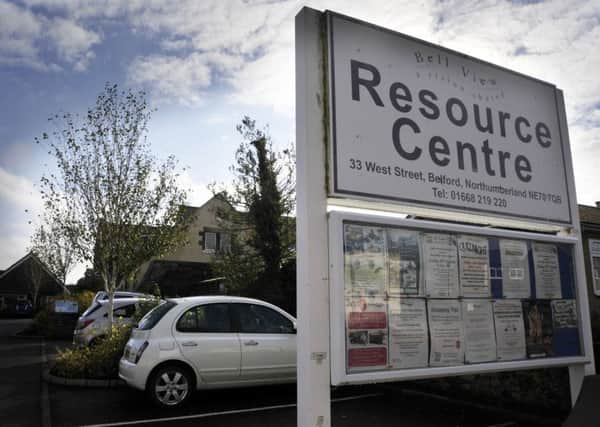Northumberland, History Society


Liz began by showing a striking painting of a family on a barge playing instruments. This demonstrated the talents of this family, with eight children. The father was Thomas Sharp, Archdeacon of Northumberland, son of John Sharp, Archbishop of York. Three of them were chosen as the focus of the talk.
William Sharp (1729-1810) was born in Northumberland, but left for London at an early age to study surgery. One of his enthusiasms was for fresh air, which he believed to be extremely beneficial for health. He provided free treatment for the poor at his surgery every morning.
Advertisement
Hide AdAdvertisement
Hide AdHe went on to support financially his younger brother Granville (1735-1813), who was the first person to challenge in the English courts the practice of slavery. This was 20 years before the first society against slavery was established by Quakers, and 40 years before it was abolished in the British Empire. Granville had also departed to London at 15 years to be apprenticed to a linen draper.
Once in London he became aware of the injustice of slavery when a man named Strong came to the surgery for treatment of injuries sustained from his master. Later he was alerted to the master’s plan to sell him to a planter to be shipped to Jamaica. Strong was kidnapped and imprisoned until the ship was ready to leave. However, Granville gained freedom for him through the courts. At this time it was extremely rare for anyone to speak out against slavery, so reliant had certain classes become on it as a means of accumulating wealth.
Granville went on to study law and espoused the principle of “Liberty before Property”.
John Sharp (1723-1792), the eldest child, became Vicar of Hartburn, near Morpeth. He built the Tower House, still standing, as a school and is known for the Grotto nearby, where caves were fitted with fireplaces. Designed as a changing area for river bathing, it was recently used for the filming of the TV series Beowulf.
Advertisement
Hide AdAdvertisement
Hide AdJohn became senior trustee of the Lord Crewe Charity and was proactive in shaping its direction. It was a wealthy charity and he believed it should be used for worthwhile goals. Bamburgh Castle, owned by the charity, was in bad repair so money was spent on improving it. He persuaded the trustees to establish a dispensary at the castle, which doubled as a surgery and infirmary and provided free treatment for people within Bamburgh parish. Brother William assisted as medical adviser.
Medical equipment at the surgery was state-of-the-art for the time and the service was unique in a rural parish. It was the most advanced equipment in the country and some of it still exists in the castle.
The dispensary accounts, along with a wealth of other documents from the charity, can be viewed at Woodhorn Archives and include details of a sedan chair used to transport patients. The cost was 5/6d. An instrument called the scarificator, containing 12 blades, was used to draw blood for the method of cupping. Both items can be viewed at the castle.
There is even mention of an electrical machine, which promised a cure for a wide variety of ailments. The guidelines for reviving drowned persons were detailed and precise. There was much amusement when Liz read out the use of silver bellows for reviving patients.
Advertisement
Hide AdAdvertisement
Hide AdMedical equipment would be delivered initially to the Blue Bell coaching inn at Belford, then transported to Bamburgh Castle.
Normal practice was for admission to a hospital to be secured by letter of recommendation from a subscriber. Yet Bamburgh was providing it free. It operated as a sort of mini-NHS. The dispensary gained large numbers of patients from 206 in its first year to well over 1,000. Free inoculation against smallpox was offered, quite a radical venture.
John also opened a school for girls to be trained in domestic subjects and this continued to operate until the castle was sold to Lord Armstrong in 1890. Pupils had to be recommended and came from far and wide. The school visitors’ book survives.
There was a canon to warn vessels of the rocks. Remains of wrecks were kept in a Wreck Room for up to a year and a day in case of claims. Finding wrecks often meant finding drowned bodies. The charity paid for coffins and funerals.
Advertisement
Hide AdAdvertisement
Hide AdUnfortunately, after John Sharp died many of the innovations ceased. In 1850 the trustees were accused of fraud, carelessness and misuse of hospitality. Accusations were made of “mollycoddling the poor”. The climate of welfare and practical assistance for the poor had changed since the introduction of the new Poor Laws. The medical charity continued until 1958, by which time the NHS was functioning.
It was amazing to learn how influential these brothers had been and Liz’ talk gave a unique insight into life at that time.
Our next meeting is on Saturday, February 18, at 9.45am for 10am, at Bell View, Belford, when Linda Bankier, of Berwick Record Office, will talk on the recent Berwick Families Project. All welcome.